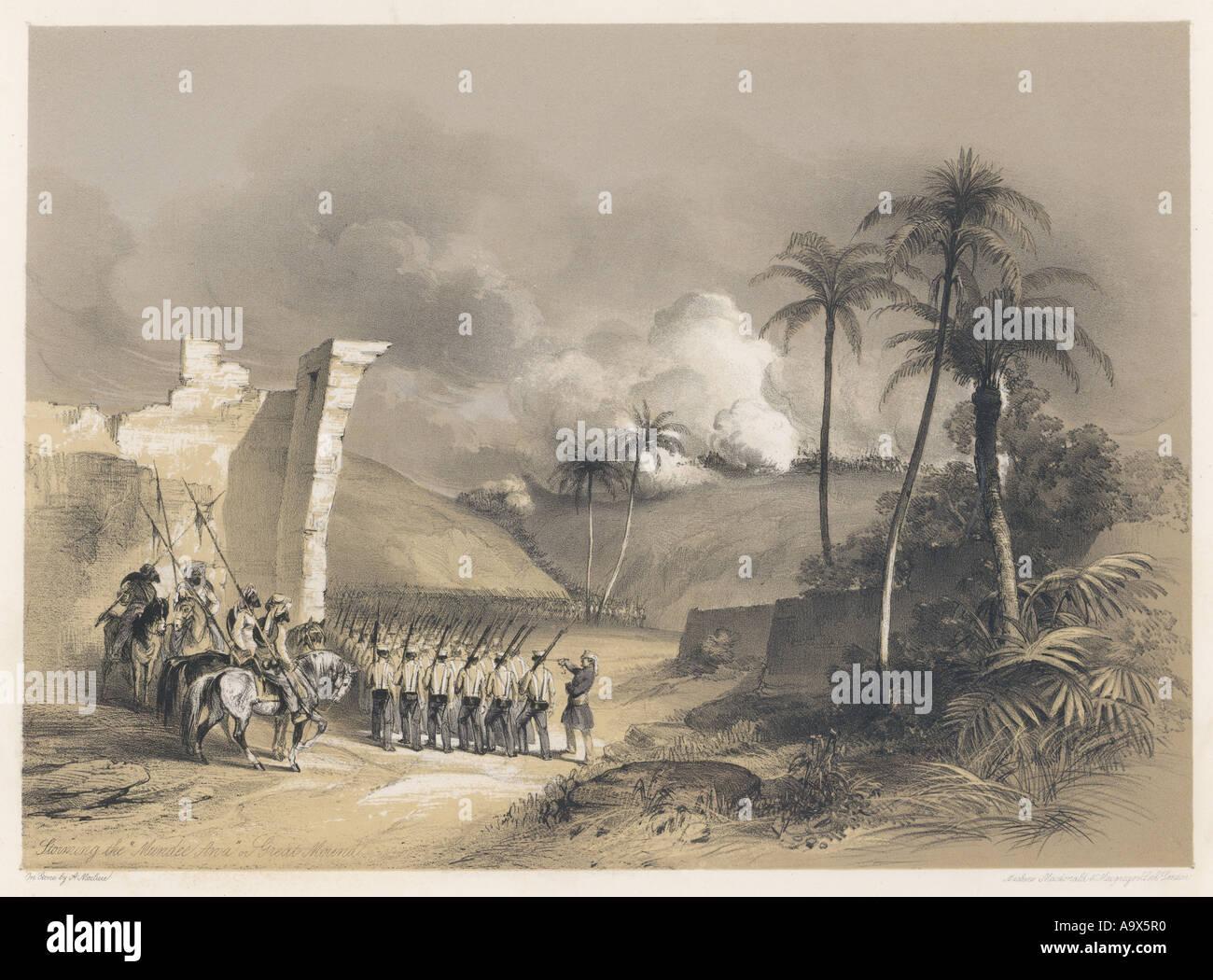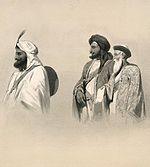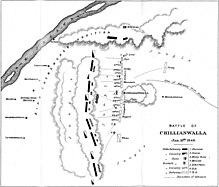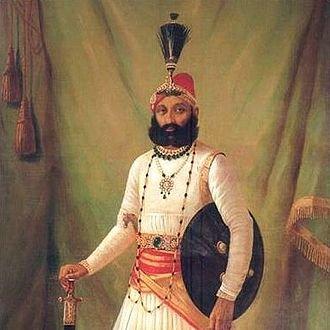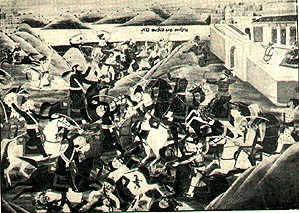Prelude:
The Second Anglo-Sikh war broke out in the Punjab, which had recently lost much of its independence to the British East India Company following the First Anglo-Sikh War, in April 1848, when the city of Multan rebelled under Dewan Mulraj. The East India Company's Commissioner for the Punjab, Frederick Currie, sent several forces of locally raised troops to help quell the revolt. One of these forces consisted largely of Sikhs, formerly from the Sikh Khalsa Army, under Sher Singh Attariwalla. Some junior British Political Officers viewed this development with alarm as Sher Singh's father, Chattar Singh Attariwalla, was known to be plotting sedition in Hazara, north of the Punjab.
On 14 September, Sher Singh's army also rebelled. Other than opposition to the British, Mulraj and Sher Singh had no aims in common. Sher Singh decided to move his army north, to join that of Chattar Singh, who had also rebelled. However, some British officers had taken steps to secure vital fortresses. For the time being, Chattar Singh was unable to leave Hazara, as the British held Attock on the Indus River, and the passes over the Margalla Hills separating Hazara from the Punjab. Instead, Sher Singh moved a few miles north and fortified the crossings over the Chenab River, while awaiting events.
The East India Company responded by announcing their intention to depose the young Maharaja, Duleep Singh, annexe the Punjab and confiscate the lands of any landholders who joined the revolt. While an army under Major General Whish resumed the Siege of Multan, the company ordered the formation of an Army of the Punjab under the veteran Commander in Chief, Sir Hugh Gough. However, both Gough and the Governor General, the 37-year-old Lord Dalhousie, delayed operations until after the end of the monsoon season, allowing Sher Singh to gather reinforcements and establish strong positions.
Gough took charge of the Army on 21 November. The next day, he attacked Sher Singh's bridgehead on the left bank of the Chenab at Ramnagar but was repulsed, raising Sikh morale. On 1 December, a cavalry division under Major General Joseph Thackwell crossed the Chenab upstream from Ramnagar. Sher Singh advanced against him, resulting in a day-long artillery duel at Sadullapur. Gough meanwhile bombarded the empty Sikh positions at Ramnagar, and postponed a general attack until the next day. During the night, Sher Singh withdrew to the north.
Gough then halted, awaiting further instructions from Dalhousie. Early in January 1849, news came that the British had recaptured the city of Multan (although Mulraj still defended the citadel), but also that the Muslim garrison of Attock had defected to Amir Dost Mohammad Khan of Afghanistan, who was half-heartedly supporting Chattar Singh. The fall of Attock nevertheless allowed Chattar Singh's army to leave Hazara and move south. Dalhousie ordered Gough to seek out and destroy Sher Singh's main army before the Sikh armies could combine, without waiting for reinforcements from the army at Multan.
Prelude:
The Second Anglo-Sikh war broke out in the Punjab, which had recently lost much of its independence to the British East India Company following the First Anglo-Sikh War, in April 1848, when the city of Multan rebelled under Dewan Mulraj. The East India Company's Commissioner for the Punjab, Frederick Currie, sent several forces of locally raised troops to help quell the revolt. One of these forces consisted largely of Sikhs, formerly from the Sikh Khalsa Army, under Sher Singh Attariwalla. Some junior British Political Officers viewed this development with alarm as Sher Singh's father, Chattar Singh Attariwalla, was known to be plotting sedition in Hazara, north of the Punjab.
On 14 September, Sher Singh's army also rebelled. Other than opposition to the British, Mulraj and Sher Singh had no aims in common. Sher Singh decided to move his army north, to join that of Chattar Singh, who had also rebelled. However, some British officers had taken steps to secure vital fortresses. For the time being, Chattar Singh was unable to leave Hazara, as the British held Attock on the Indus River, and the passes over the Margalla Hills separating Hazara from the Punjab. Instead, Sher Singh moved a few miles north and fortified the crossings over the Chenab River, while awaiting events.
The East India Company responded by announcing their intention to depose the young Maharaja, Duleep Singh, annexe the Punjab and confiscate the lands of any landholders who joined the revolt. While an army under Major General Whish resumed the Siege of Multan, the company ordered the formation of an Army of the Punjab under the veteran Commander in Chief, Sir Hugh Gough. However, both Gough and the Governor General, the 37-year-old Lord Dalhousie, delayed operations until after the end of the monsoon season, allowing Sher Singh to gather reinforcements and establish strong positions.
Gough took charge of the Army on 21 November. The next day, he attacked Sher Singh's bridgehead on the left bank of the Chenab at Ramnagar but was repulsed, raising Sikh morale. On 1 December, a cavalry division under Major General Joseph Thackwell crossed the Chenab upstream from Ramnagar. Sher Singh advanced against him, resulting in a day-long artillery duel at Sadullapur. Gough meanwhile bombarded the empty Sikh positions at Ramnagar, and postponed a general attack until the next day. During the night, Sher Singh withdrew to the north.
Gough then halted, awaiting further instructions from Dalhousie. Early in January 1849, news came that the British had recaptured the city of Multan (although Mulraj still defended the citadel), but also that the Muslim garrison of Attock had defected to Amir Dost Mohammad Khan of Afghanistan, who was half-heartedly supporting Chattar Singh. The fall of Attock nevertheless allowed Chattar Singh's army to leave Hazara and move south. Dalhousie ordered Gough to seek out and destroy Sher Singh's main army before the Sikh armies could combine, without waiting for reinforcements from the army at Multan.






